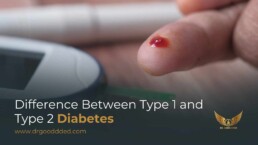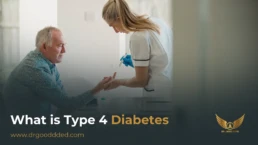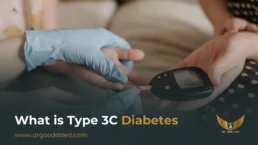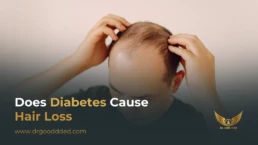High blood sugar without diabetes happens when your glucose run higher than normal, even though you do not have diabetes. It can come from food choices, stress, poor sleep, illness, or certain medicines. It matters because steady spikes strain your heart, your nerves, and your brain.
Table of Contents
ToggleWhen you spot high blood sugar without diabetes, you can fix many causes with simple daily steps and timely medical checks.
Understanding High Blood Sugar In Non-Diabetics
How Blood Sugar Levels Work In Healthy Individuals
You eat carbs. Your gut turns them into glucose. Your pancreas makes insulin. Insulin helps move glucose into your cells for energy. In most people, fasting numbers sit near 70 to 99 mg/dL.
After meals, levels rise for a short time, then fall as insulin does its job. If the rise is small and brief, your system works well.
The Difference Between Diabetic And Non-Diabetic Glucose Regulation
With diabetes, insulin is too low, or cells do not respond well. That keeps glucose high often. Without diabetes, your system still works, yet daily life can push numbers up for short spells. A heavy carb load, a bad night of sleep, or stress can lead to high blood sugar without diabetes. These spikes may pass, but if they repeat, your risk grows.
What Blood Sugar Range Is Considered High Without Diabetes
Fasting at 100 to 125 mg/dL signals impaired fasting glucose. A1C of 5.7 percent to 6.4 percent points to prediabetes. One to two hours after a meal, many aim to stay under 140 mg/dL. If your values often beat those marks, you likely face high blood sugar without diabetes, and you should act.
Why You Should Pay Attention To Recurring Glucose Spikes
Frequent highs tire your beta cells in the pancreas. They drive insulin resistance. They can set the stage for prediabetes. You may notice cravings, fog, and energy dips. When you see high blood sugar in non-diabetics in your own log, treat it like a signal. Course correct now, so you do not face bigger problems later.
What Causes Elevated Blood Sugar Without Diabetes
High-Carbohydrate Or Refined Sugar Diets
Fast carbs hit your blood fast. Think white bread, pastries, fries, juice, and soda. Large portions make the surge bigger. To slow the rise, balance your plate. Add protein like eggs, fish, chicken, tofu, or beans.
Add fiber from veggies, lentils, oats, and nuts. Healthy fat from avocado or olive oil helps too. This mix blunts high blood sugar without diabetes after meals. It also lowers the chance that you trigger high glucose levels again at the next meal.
Skipping Meals And Overeating Cycles
You skip breakfast, then eat a huge lunch. Your liver releases stored glucose during the long gap. The big meal piles on. That double hit can raise levels for hours. A steady meal rhythm works better. Aim for regular meals with a protein anchor. Keep portions moderate. This simple pattern reduces high blood sugar without diabetes across the day.
Dehydration Or Lack Of Electrolytes
Low fluid can cause glucose in your blood. You feel thirst, dry mouth, and a mild headache. If you also sweat a lot, you lose sodium and potassium. That can make you feel weak and push you to snack for quick energy. Sip water all day.
Add a pinch of salt to food if you train hard or work in the heat, unless your doctor tells you to limit it. Good hydration is one of the common causes of elevated blood sugar without diabetes that people miss.
Acute Stress Responses That Spike Cortisol
Stress hormones like cortisol and adrenaline raise glucose. Your liver sends out sugar so you can fight or run. Today, the “fight” is often an inbox, traffic, or money worries. Quick resets help.
Try four slow nasal breaths in and six out. Take a five-minute walk. Stretch your calves and hips. A short reset can prevent high blood sugar without diabetes and may improve your focus at the same time.
Chronic Sleep Deprivation And Its Metabolic Impact
Short sleep, late sleep, or broken sleep weakens insulin action. It spikes hunger hormones. You crave fast carbs. You snack late. Aim for seven to nine hours most nights. Keep a steady sleep and wake time.
Keep the room cool and dark. Treat snoring or sleep apnea if you have it. Strong sleep habits cut high blood sugar without diabetes and support steady energy.
Medical & Hormonal Causes (Non-Diabetic)
Insulin Resistance And Prediabetes Explained
Insulin resistance means your cells do not respond well to insulin. Your pancreas makes more insulin to keep up. Post-meal numbers rise first. Over time, fasting rises too. Waist gain, dark velvety skin folds on the neck or armpits, and energy dips can be clues. Catching high blood sugar without diabetes at this stage lets you turn the trend with diet, movement, and sleep.
Medications That Raise Blood Sugar
Some drugs push glucose higher. Common ones include:
- Oral or injected steroids like prednisone
- Some antipsychotics
- Certain diuretics and beta blockers
- Some cancer treatments
If a needed drug raises your glucose, do not stop it on your own. Ask your doctor about dose, timing, or options. You can also add a post-meal walk and a fiber-rich starter to blunt high blood sugar without diabetes while you stay on therapy.
Endocrine Causes: Cushing’s, Thyroid Dysfunction, PCOS
Hormones steer glucose. High cortisol in Cushing’s drives liver sugar release. Thyroid problems speed up or slow down how your body uses glucose. PCOS, a common condition in women, often pairs with insulin resistance. Treating the root cause can calm high blood sugar without diabetes and improve cycles, skin, and energy.
Acute Illness, Infection, And Post-Surgical Hyperglycemia
Fever, trauma, and operations raise stress hormones. Your body asks for fast fuel. Even without diabetes, you can run high for a few days. Hospitals often check glucose after surgery or during infections. This helps teams diagnose non-diabetic high blood sugar and prevent slow wound healing.
At home, rest, fluids, and your usual meds matter. Call your doctor if you cannot keep food or water down, or if numbers stay high.
Liver, Pancreatic, Or Other Organ Dysfunction Affecting Glucose
Your liver stores and makes glucose. Your pancreas makes insulin. When either organ struggles, glucose control gets harder. Fatty liver, hepatitis, pancreatitis, or cystic fibrosis can push you toward high blood sugar without diabetes. Warning signs include yellow skin or eyes, pale stools, dark urine, severe belly pain, or vomiting. Get care fast if these appear.
Common Symptoms Of High Blood Sugar Without Diabetes
Constant Thirst, Fatigue, And Frequent Urination
Glucose pulls water into your urine. You pee more. You feel dry and tired. You may wake at night to use the bathroom. These are classic symptoms of high blood sugar without diabetes. If they show up for days, check your numbers and your habits.
Headache, Blurred Vision, And Brain Fog
Fluids shift when glucose rises. That can blur your vision and give you a dull headache. Your thinking may feel slow. These signs can fade when your levels drop, yet frequent repeats point to high blood sugar without diabetes that needs attention.
Tingling Sensations And Muscle Weakness
Nerves do not like high glucose. You may feel pins and needles in your hands or feet. Your grip may feel weak on high days. Call your doctor if these signs persist or worsen.
Increased Hunger Despite Normal Eating Patterns
Large spikes are often followed by fast drops. You feel hungry even after a big plate of food. Add protein and fiber at each meal. Try a short walk after eating. These moves flatten the curve and reduce high blood sugar without diabetes swings.
Lifestyle Habits That Trigger High Glucose Levels
Sedentary Lifestyle And Low Daily Activity
Long sitting lowers insulin action. Your muscles act like sponges for glucose when they move. Use short bouts to your advantage.
- Take a brisk 10-minute walk after meals.
- Stand or stretch every 30 to 45 minutes.
- Carry groceries, climb stairs, or do bodyweight squats.
These small bursts can stop high blood sugar without diabetes before it builds.
Diets High In Processed Foods And Sugary Beverages
Packaged snacks and sweet drinks are easy to overdo. They hit fast and hard. Swap soda for water or sparkling water. Choose whole fruit over juice. Start meals with a veggie or a broth soup. These swaps cut high blood sugar without diabetes and help you feel full on fewer calories.
Smoking, Alcohol, And Irregular Eating Windows
Nicotine raises stress hormones. That can trigger high glucose levels. Heavy drinking adds sugar and poor sleep. Long fasting windows followed by huge meals can cause a surge. If you drink, set a limit, eat with your drink, and avoid sweet mixers. If you smoke, seek support to quit.
Stress, Anxiety, And Poor Emotional Regulation
Daily stress keeps cortisol up. Your body stays stuck in alert mode. Practice quick stress tools you can repeat anywhere.
- Four by six breathing, four seconds in, six seconds out
- Two-minute walk breaks
- A short body scan from head to toe
These simple acts can lower high blood sugar without diabetes and improve your mood.
Inadequate Hydration And Poor Sleep Quality
Water and sleep set your baseline. Keep a bottle nearby. Drink with each meal and between meals. Keep a set bedtime. Limit caffeine after noon if it keeps you up. Better sleep and steady fluids reduce common causes of elevated blood sugar without diabetes and support steady focus.
Short-Term Glucose Spikes Vs Chronic High Sugar Episodes
Reactive Hyperglycemia After Large Meals
A very large pasta plate or a sugary dessert can trigger a sharp rise within an hour. For many, this is short-lived. If it happens most days, it becomes a pattern that harms health. Break large meals into smaller ones. Start with a salad or veggie dish. Add protein first. Take a short walk after you eat. These steps reduce high blood sugar without diabetes and provide steady energy.
How Caffeine And Energy Drinks Affect Glucose
Caffeine can raise glucose in some people for a short time. Sugary energy drinks raise it more and add a crash. If you love coffee, have it with food, not on an empty stomach. Choose plain coffee or tea without sugar. Track your own response with a meter. If your readings jump, cut back and see if high blood sugar without diabetes improves.
The Difference Between Fasting, Post-Meal, And Random Sugar Readings
Each number tells a different story.
- Fasting shows your baseline after a night of rest.
- Post-meal shows how you handle a specific plate.
- Random catches your level during daily life.
Use all three for one week. You will see patterns. You will spot times that trigger high glucose levels. That helps you plan the fixes that matter most.
When A Temporary Spike Becomes A Chronic Issue
One odd high is not a crisis. Spikes that repeat most days are. Morning highs that creep up are too. When that happens, review food, sleep, stress, and meds. Book a checkup to diagnose non-diabetic high blood sugar and to rule out hidden medical causes. Early action keeps you in control of high blood sugar without diabetes and lowers your future risk.
How To Check For High Blood Sugar Without Diabetes
Using A Home Glucose Monitor Or CGM Device
You can check your levels at home. A simple finger-stick meter is enough. Wash your hands. Use a test strip. Record the number. You can check in the morning before eating and again one to two hours after meals. You can check before bed, too.
A CGM (continuous glucose monitor) sits on the skin and gives frequent readings. Some people like it because they can see how each meal affects them. If you try a CGM, still confirm unusual numbers with a finger stick. That removes confusion from sensor errors.
Tracking gives you patterns that explain high blood sugar in non-diabetics when it appears. You can connect numbers to food portions, stress, and sleep.
Recommended Blood Sugar Targets For Non-Diabetics
Most people without diabetes sit:
- Fasting between 70 and 99 mg/dL
- One to two hours after meals, below 140 mg/dL
If your fasting number is 100 to 125 mg/dL often, that suggests early glucose problems. If your after-meal numbers pass 140 mg/dL often, your meals may be too large, too fast, or too high in refined carbs.
Keeping within these ranges helps avoid symptoms of high blood sugar without diabetes that can show up during the day.
How To Interpret Fasting, Pre-Meal, And Post-Meal Readings
Fasting shows your baseline. If it rises, look at late-night snacks, stress, or short sleep.
Pre-meal gives you a clue about how long your last meal lasted in the body.
Post-meal tells you how well you handled the carbs on your plate. If your post meal number jumps high, reduce portion size next time and add more protein and fiber.
Change one thing at a time. Measure again. You will learn which habits cause high blood sugar in non-diabetics for you personally.
Role Of A1C Tests In Identifying Hidden Glucose Issues
A1C is a lab test that shows your average glucose over two to three months. It helps your doctor diagnose non-diabetic high blood sugar when daily readings look inconsistent.
If your A1C is 5.7 percent to 6.4 percent, you are in the prediabetes range. This is the stage where lifestyle changes work best and can reverse the trend.
Health Risks Of Persistent High Blood Sugar In Non-Diabetics
Insulin Resistance And Prediabetes Progression
Frequent spikes make your body produce more insulin. Over time, your cells stop responding well. This is insulin resistance. It leads toward prediabetes. Without change, it can progress to diabetes. This is slow and silent, so many people miss it.
Heart Disease And Vascular Complications
Blood vessels get stiff when glucose stays high. This affects blood flow to the brain, heart, and limbs. Over time, this raises the risk of heart disease and stroke. Keeping meals balanced and staying active protects your heart.
Weight Gain And Chronic Fatigue
High glucose can lead to rapid hunger swings. You eat more. You gain weight. You feel tired because your cells are not using glucose well. Once glucose is steadier, energy improves, and hunger settles.
Impaired Immunity And Poor Wound Healing
High levels weaken white blood cells. Cuts take longer to heal. You may get infections more easily. Bringing numbers back into range supports your immune strength and recovery speed.
Managing Non-Diabetic High Glucose Levels Through Diet And Exercise
Balanced Meal Planning With Fiber And Protein
Start each meal with protein. Add non-starch vegetables. Add whole grains or fruit in smaller servings. This slows digestion and reduces spikes.
Examples:
- Eggs, spinach, and oats
- Grilled chicken, brown rice, mixed vegetables
- Lentil soup with side salad
This pattern cuts symptoms of high blood sugar without diabetes because it eases the sudden rise after eating.
Importance Of Low-Glycemic Foods And Portion Control
Low-glycemic foods break down more slowly. They keep glucose steady. Choose whole grains over white flour. Choose beans over sweet snacks. Keep plates reasonable in size. Eat until you are satisfied, not stuffed.
Strength And Aerobic Exercises That Improve Insulin Sensitivity
Muscle uses glucose well. More muscle means better glucose control. Strength training two to three days each week helps. Simple moves like squats, push-ups, and resistance bands are enough. Add walking, swimming, or cycling most days. A short walk after meals helps lower high blood sugar in non-diabetics without much effort.
Hydration Habits To Stabilize Glucose
Drink water with meals. Sip during the day. Keep a bottle near you. Good hydration lowers one of the causes of elevated blood sugar without diabetes that is easily overlooked.
Mindful Eating And Avoiding Late-Night Snacking
Eat slowly. Notice when you are full. Put your fork down between bites. Stop eating two to three hours before bed. This reduces morning highs and helps you sleep better.
How Doctors Diagnose Non-Diabetic High Blood Sugar
Fasting Blood Glucose — When And What It Shows
This test checks your morning baseline. It is one of the first steps to diagnose non-diabetic high blood sugar. If it is high more than once, your doctor may ask for more tests.
Oral Glucose Tolerance Test (OGTT) — When To Use It
You drink a measured sugar drink. Your blood sugar is checked over a few hours. This test shows how your body handles a sugar load. It can show problems even when fasting glucose looks normal.
Hemoglobin A1c — Interpreting Averages In Non-Diabetics
A1C shows long-term trends. If it is near 5.7 percent or higher, take action to prevent diabetes. This test is useful when daily readings vary or when symptoms seem unclear.
When To Check Insulin / C-Peptide And Consider CGM
Your doctor may check insulin or C-peptide to see how your pancreas responds. A CGM can help you learn your patterns. Use it for learning, not fear. It helps reveal foods or habits that trigger high glucose levels without you noticing.
FAQ
What is considered a high blood sugar reading for someone without diabetes?
A reading above 140 mg/dL one to two hours after eating is considered high. If it happens often, it signals high blood sugar without diabetes that needs lifestyle adjustments.
Can stress or anxiety cause high blood sugar levels?
Yes. When stress hormones rise, your liver releases extra glucose. This can lead to symptoms of high blood sugar without diabetes during busy or emotional days, even without any changes in food.
Does dehydration raise blood sugar in non-diabetics?
Yes. When you are dehydrated, glucose becomes more concentrated in your blood. Drinking water throughout the day can help control high blood sugar in non-diabetics and reduce headaches or fatigue.
Is it normal for glucose to spike after eating?
A small rise after eating is normal. A large spike means the meal may have been too high in fast carbohydrates. Tracking meals can help prevent high blood sugar without diabetes after eating.
What foods can lower blood sugar naturally?
Foods high in fiber, like beans, vegetables, nuts, and whole grains, can slow glucose rise. Eating protein with each meal also helps control symptoms of high blood sugar without diabetes throughout the day.
How can I tell if I’m insulin-resistant?
You may feel tired after meals, gain weight around your waist, or have cravings for sweets. Testing fasting glucose and A1C helps confirm high blood sugar without diabetes related to insulin resistance.

This article is medically reviewed by Dr. Nivedita Pandey, Senior Gastroenterologist and Hepatologist, ensuring accurate and reliable health information.
Dr. Nivedita Pandey is a U.S.-trained gastroenterologist specializing in pre and post-liver transplant care, as well as managing chronic gastrointestinal disorders. Known for her compassionate and patient-centered approach, Dr. Pandey is dedicated to delivering the highest quality of care to each patient.










